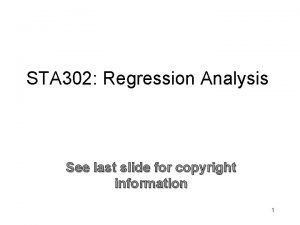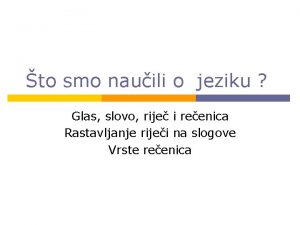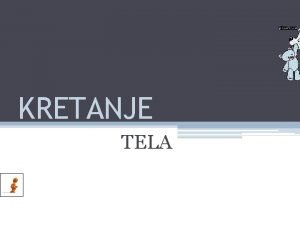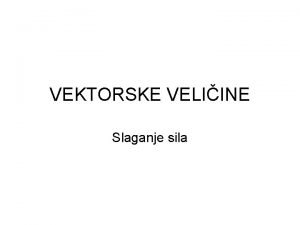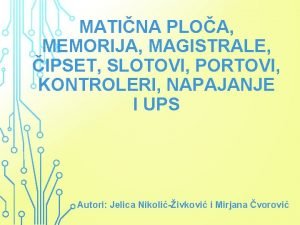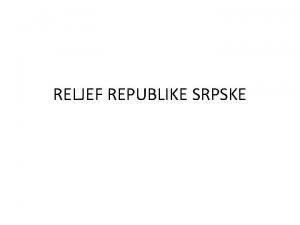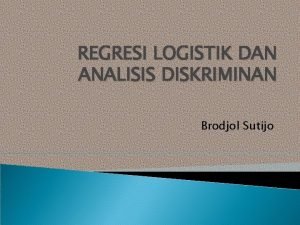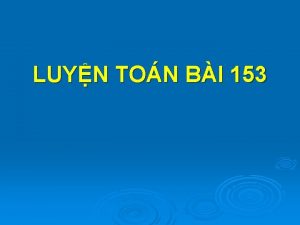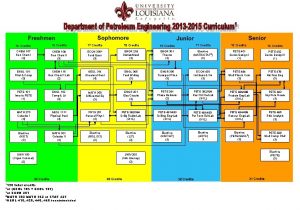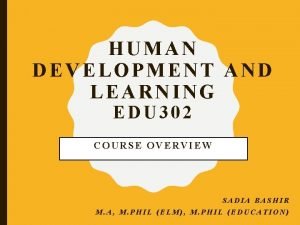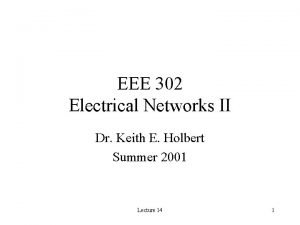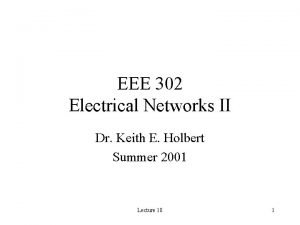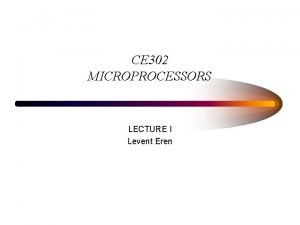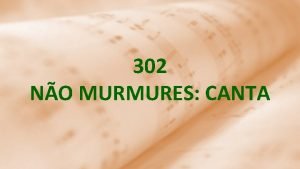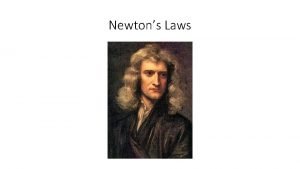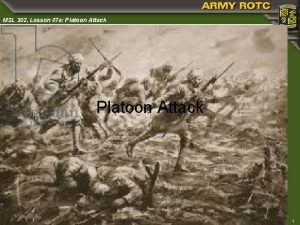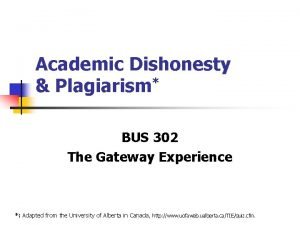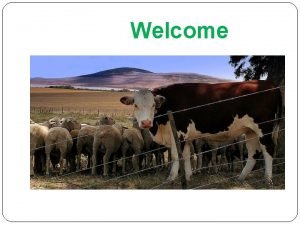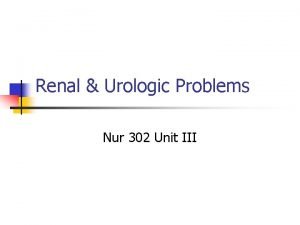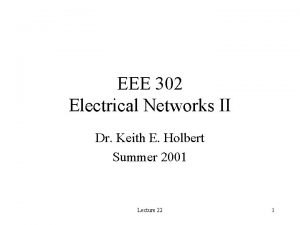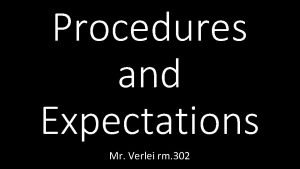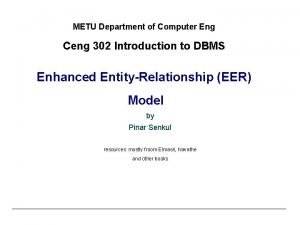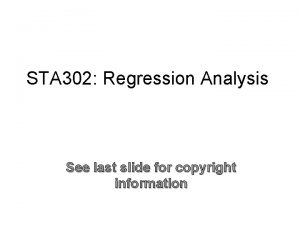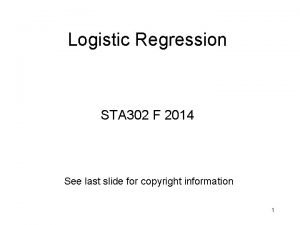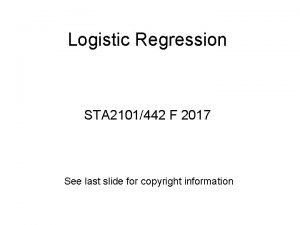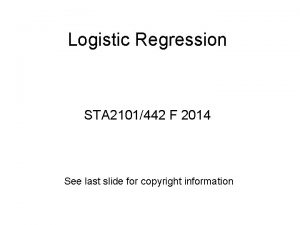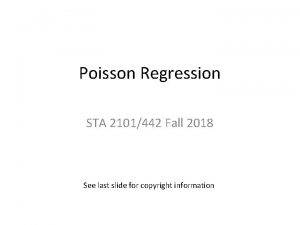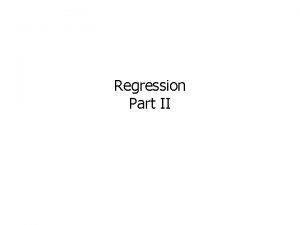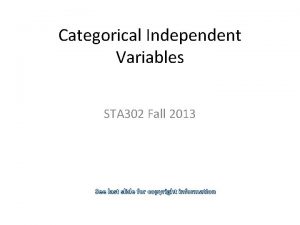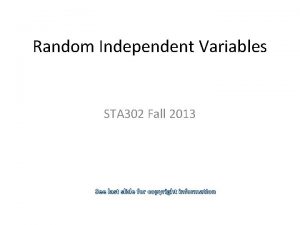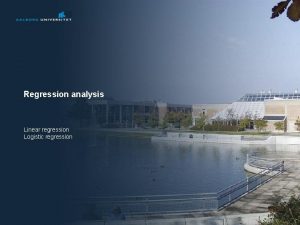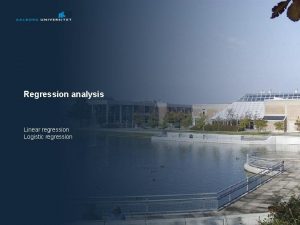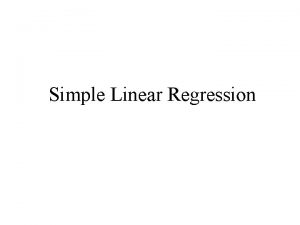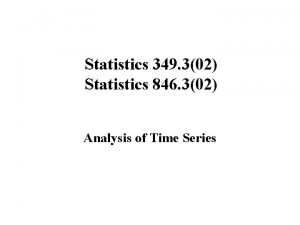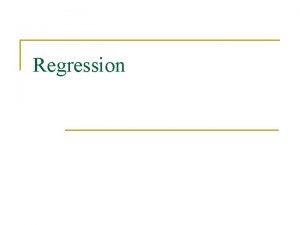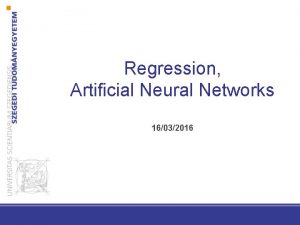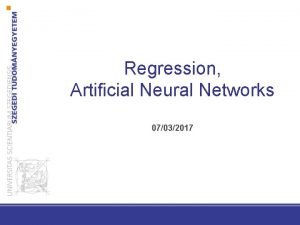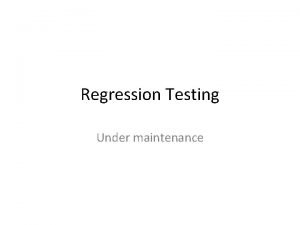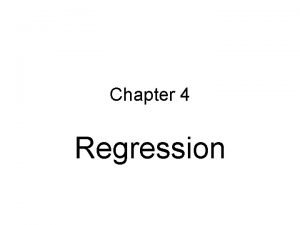STA 302 Regression Analysis See last slide for





























- Slides: 29

STA 302: Regression Analysis See last slide for copyright information 1

Statistics • Objective: To draw reasonable conclusions from noisy numerical data • Entry point: Study relationships between variables 2

Data File • Rows are cases. There are n cases. • Columns are variables. A variable is a piece of information that is recorded for every case. 3

4

Variables can be • Independent or Predictor • Dependent or Response (predicted) 5

Simple regression and correlation • Simple means one independent variable. • Dependent variable quantitative. • Independent variable usually quantitative too. 6

Simple regression and correlation High School GPA University GPA 88 86 78 73 87 89 86 81 77 67 … … 7

Scatterplot 8

Least squares line 9

Correlation between variables • is an estimate of • 10

Correlation coefficient r • -1 ≤ r ≤ 1 • r = +1 indicates a perfect positive linear relationship. All the points are exactly on a line with a positive slope. • r = -1 indicates a perfect negative linear relationship. All the points are exactly on a line with a negative slope. • r = 0 means no linear relationship (curve possible). Slope of least squares line = 0 • r 2 = proportion of variation explained 11

r = 0. 004 12

r = 0. 112 13

r = 0. 368 14

r = 0. 547 15

r = 0. 733 16

r = - 0. 822 17

r = 0. 025 18

r = - 0. 811 19


A Statistical Model 21

One Independent Variable at a Time Can Produce Misleading Results • The standard elementary methods all have a single independent variable (at most), so they should be used with caution in practice. • Example: Artificial and extreme, to make a point: • Suppose the correlation between Age and Strength is r = -0. 96 22

23

Need multiple regression 24

Multiple regression in scalar form 25

Multiple regression in matrix form 26

So we need • Matrix algebra • Random vectors, especially multivariate normal • Software to do the computation 27

Reading • In Rencher and Schaalje’s Linear Models In Statistics. • Chapter 6 (only 10 pages). • Overview using simple regression: One explanatory variable. 28

Copyright Information This slide show was prepared by Jerry Brunner, Department of Statistical Sciences, University of Toronto. It is licensed under a Creative Commons Attribution - Share. Alike 3. 0 Unported License. Use any part of it as you like and share the result freely. These Powerpoint slides are available from the course website: http: //www. utstat. toronto. edu/~brunner/oldclass/302 f 20 29
 Sta 0-368
Sta 0-368 Heel and toe polka meaning
Heel and toe polka meaning Linear regression vs multiple regression
Linear regression vs multiple regression Multiple regression vs simple regression
Multiple regression vs simple regression Logistic regression vs linear regression
Logistic regression vs linear regression Logistic regression vs linear regression
Logistic regression vs linear regression Glas slovo riječ rečenica test
Glas slovo riječ rečenica test Moji preci
Moji preci Pravac i smer kretanja
Pravac i smer kretanja Vektorske i skalarne veličine
Vektorske i skalarne veličine Sta su slotovi
Sta su slotovi Niske planine u republici srpskoj
Niske planine u republici srpskoj Perbedaan analisis diskriminan dan regresi logistik
Perbedaan analisis diskriminan dan regresi logistik We ...... a big piece of wood last saturday. (see)
We ...... a big piece of wood last saturday. (see) 7285 x 302
7285 x 302 What is a 302
What is a 302 Mat 302 bmcc
Mat 302 bmcc Edu 302
Edu 302 Eee 302
Eee 302 Eee 302
Eee 302 Ce 302
Ce 302 Ao invés de murmurares canta
Ao invés de murmurares canta A basketball star exerts a force of 3225 n
A basketball star exerts a force of 3225 n Lesson 302
Lesson 302 Gateway experience definition
Gateway experience definition Cow metu
Cow metu Nur 302
Nur 302 Quality factor of rlc circuit
Quality factor of rlc circuit Rm 302
Rm 302 Ceng302
Ceng302
